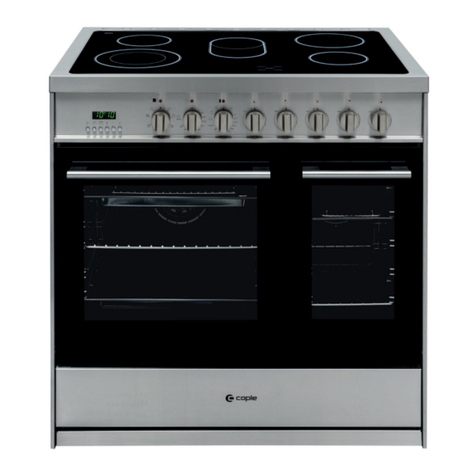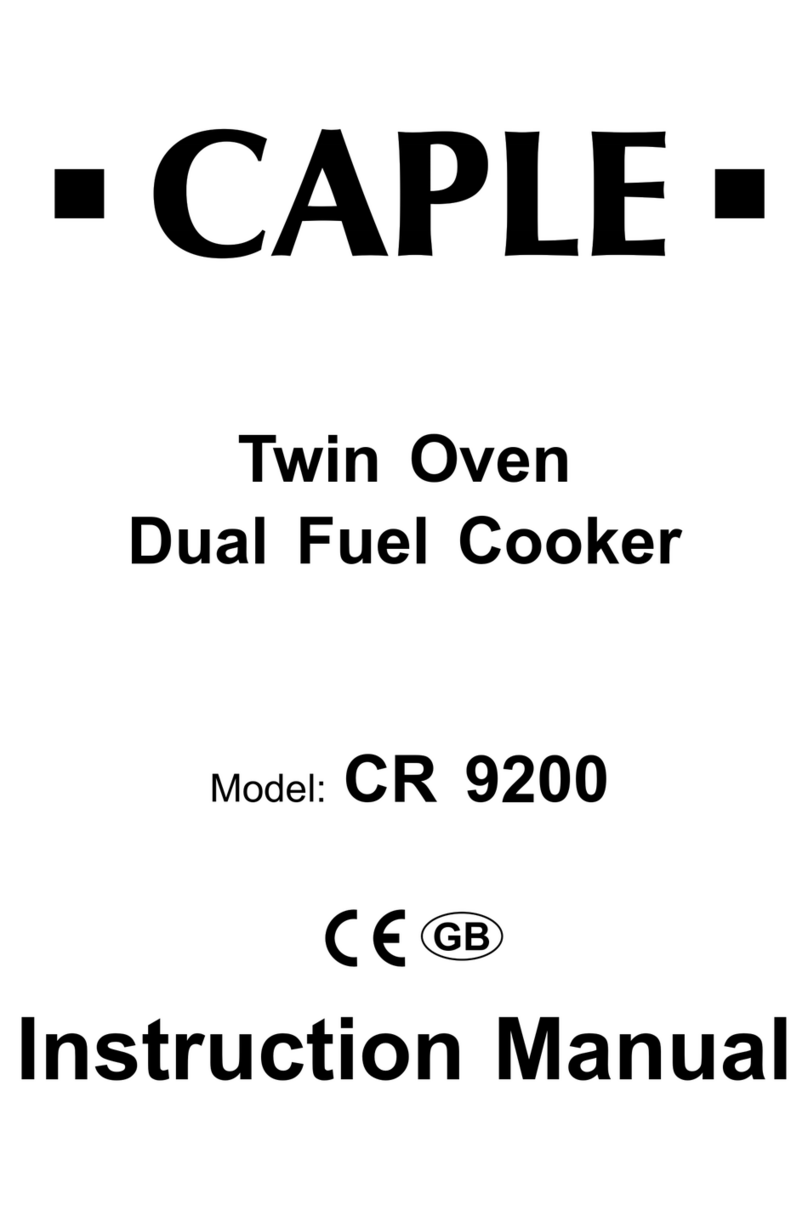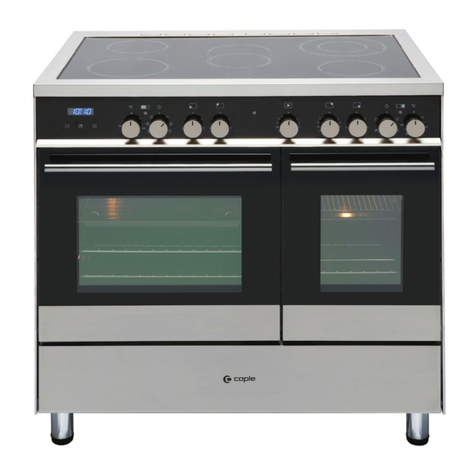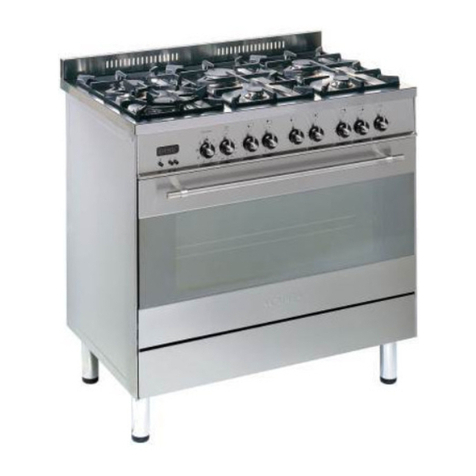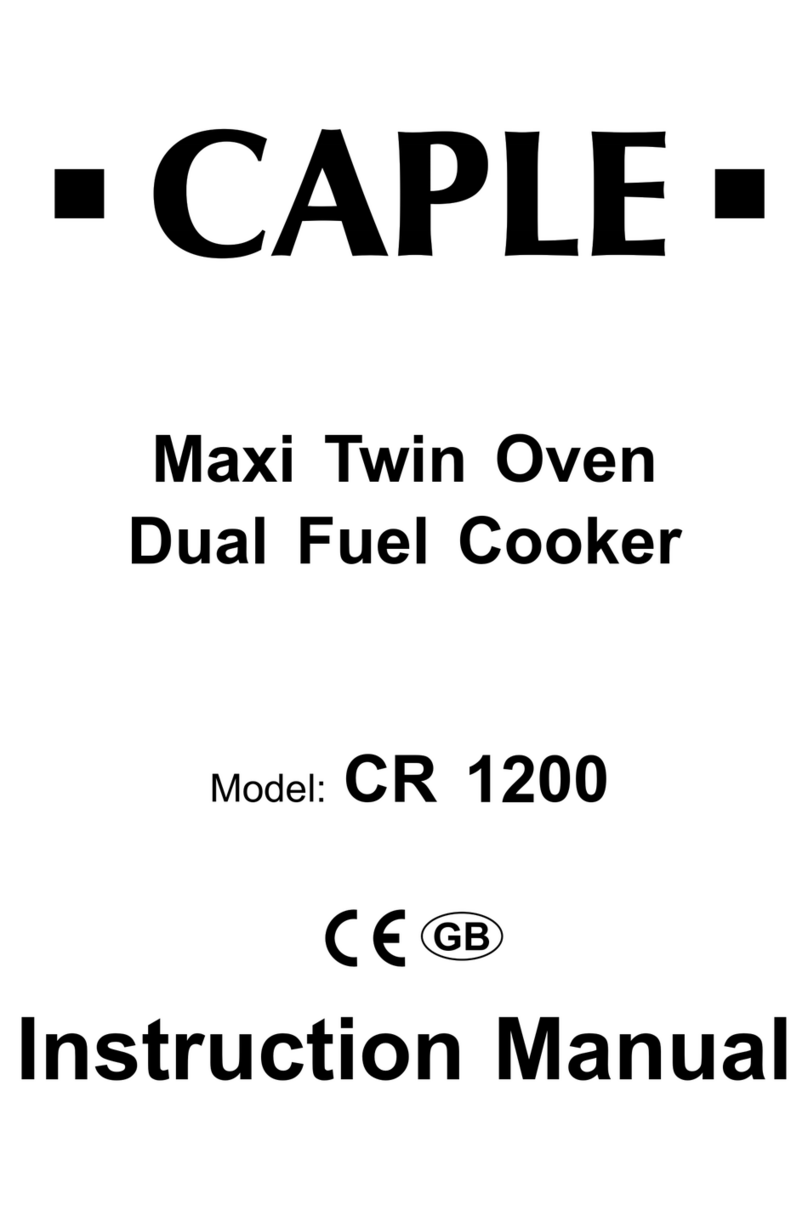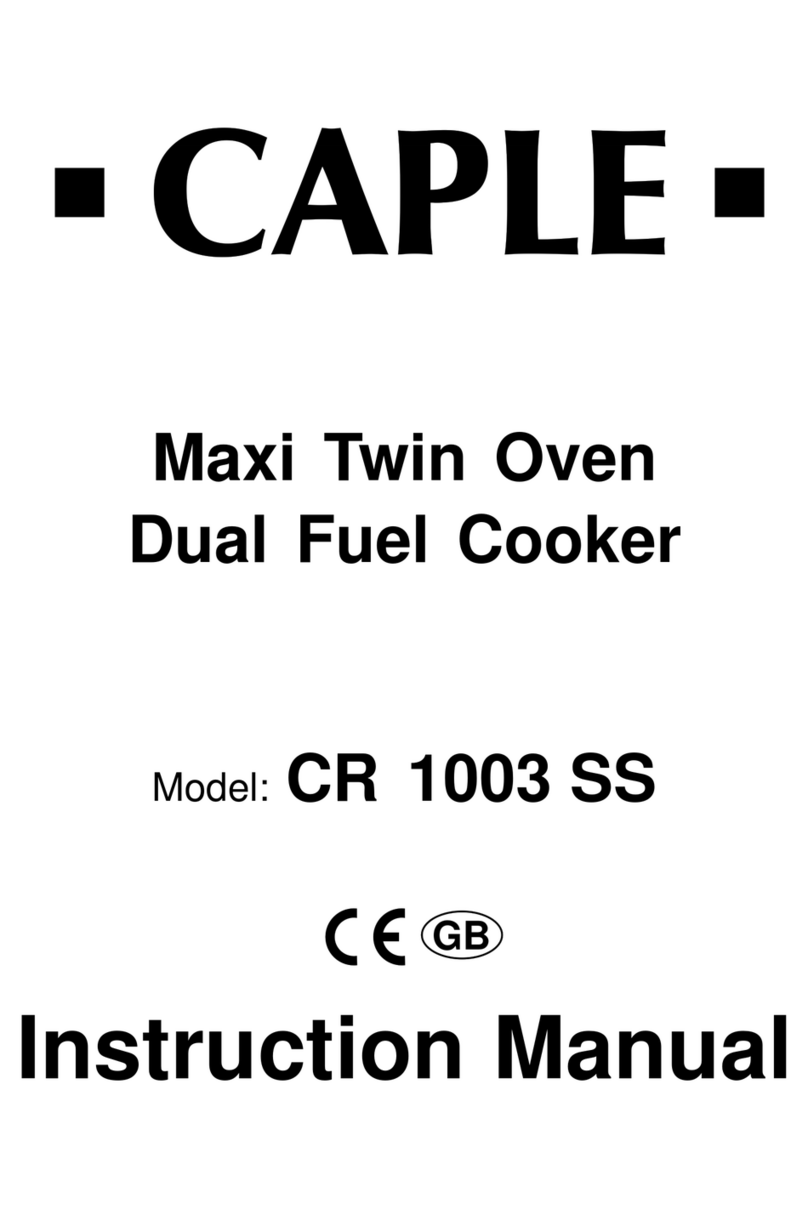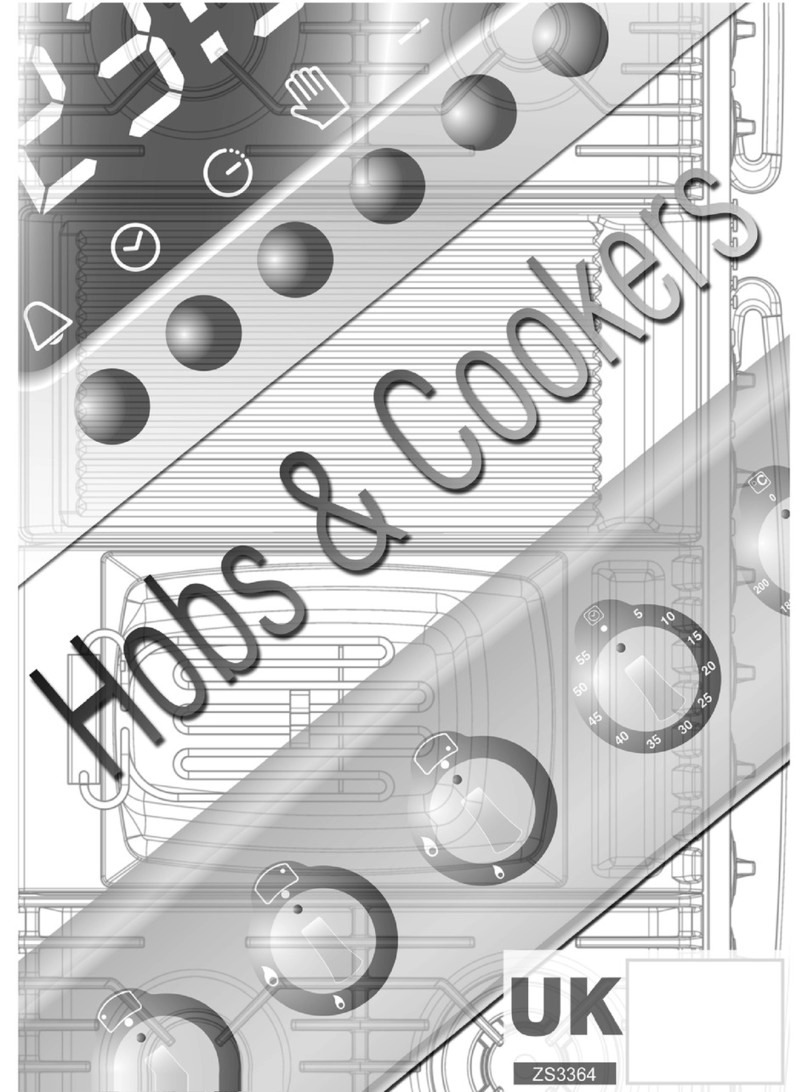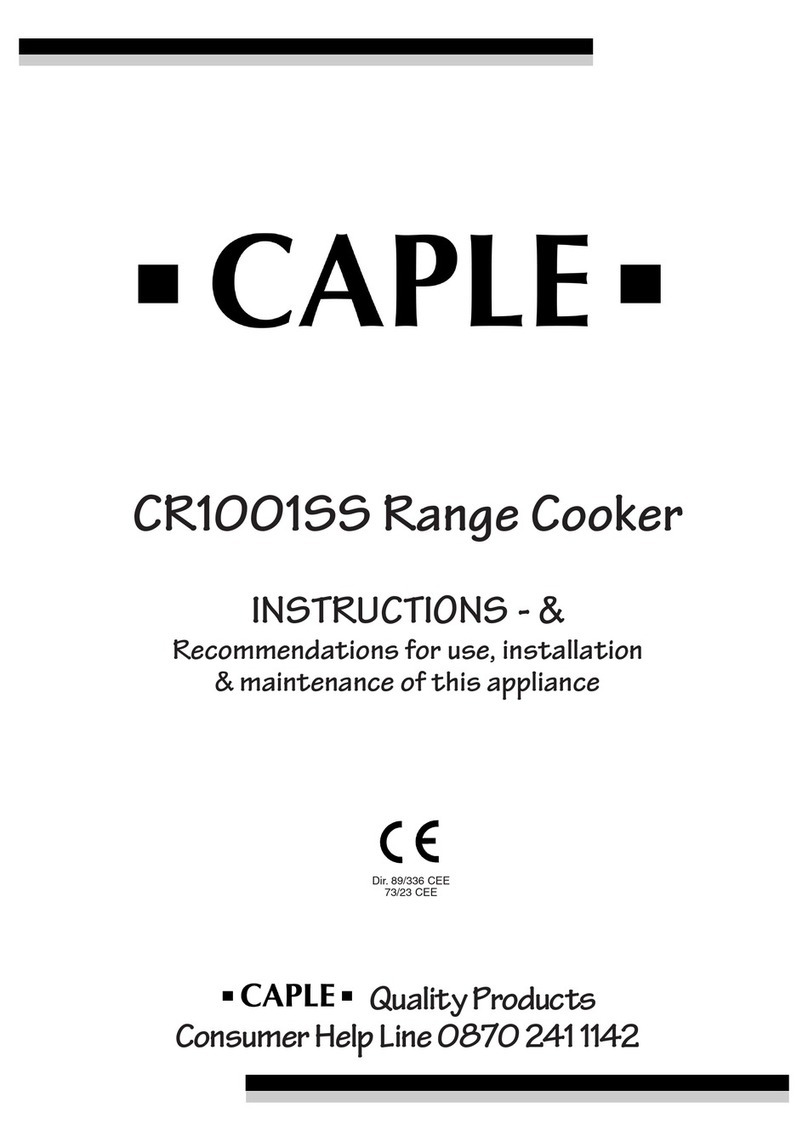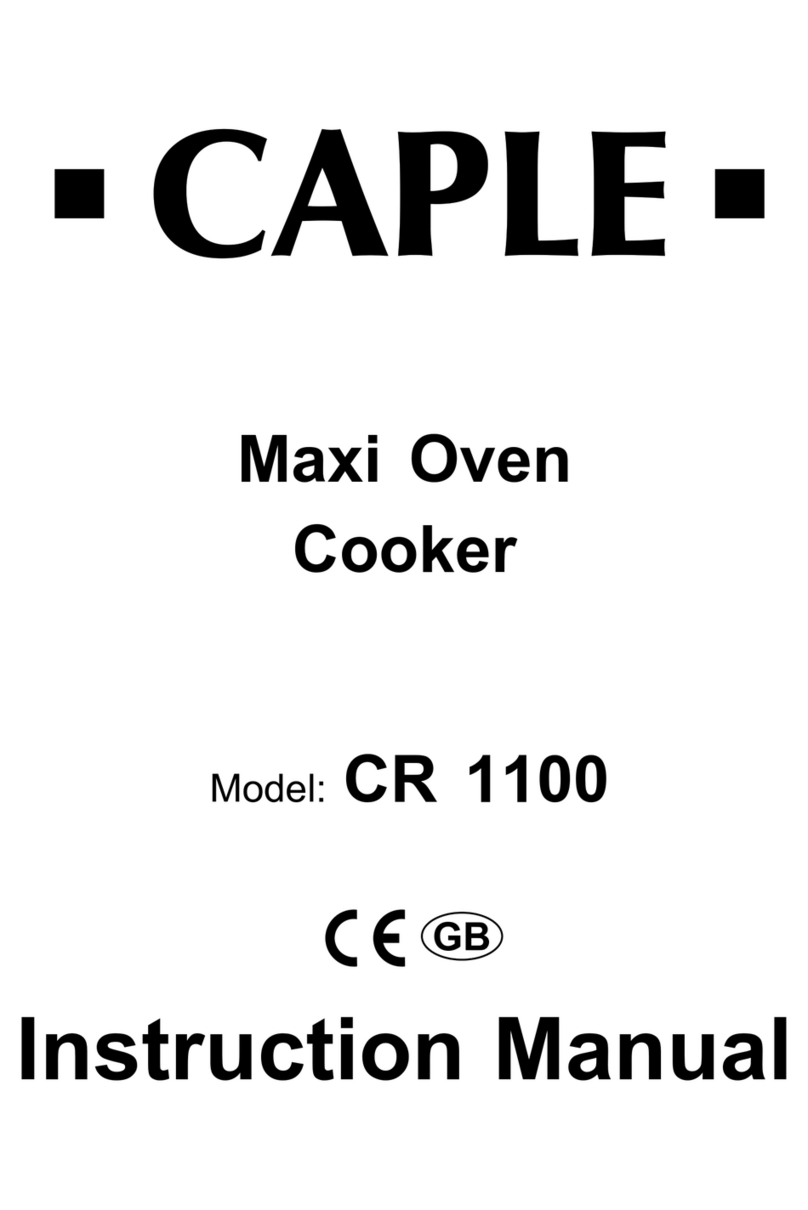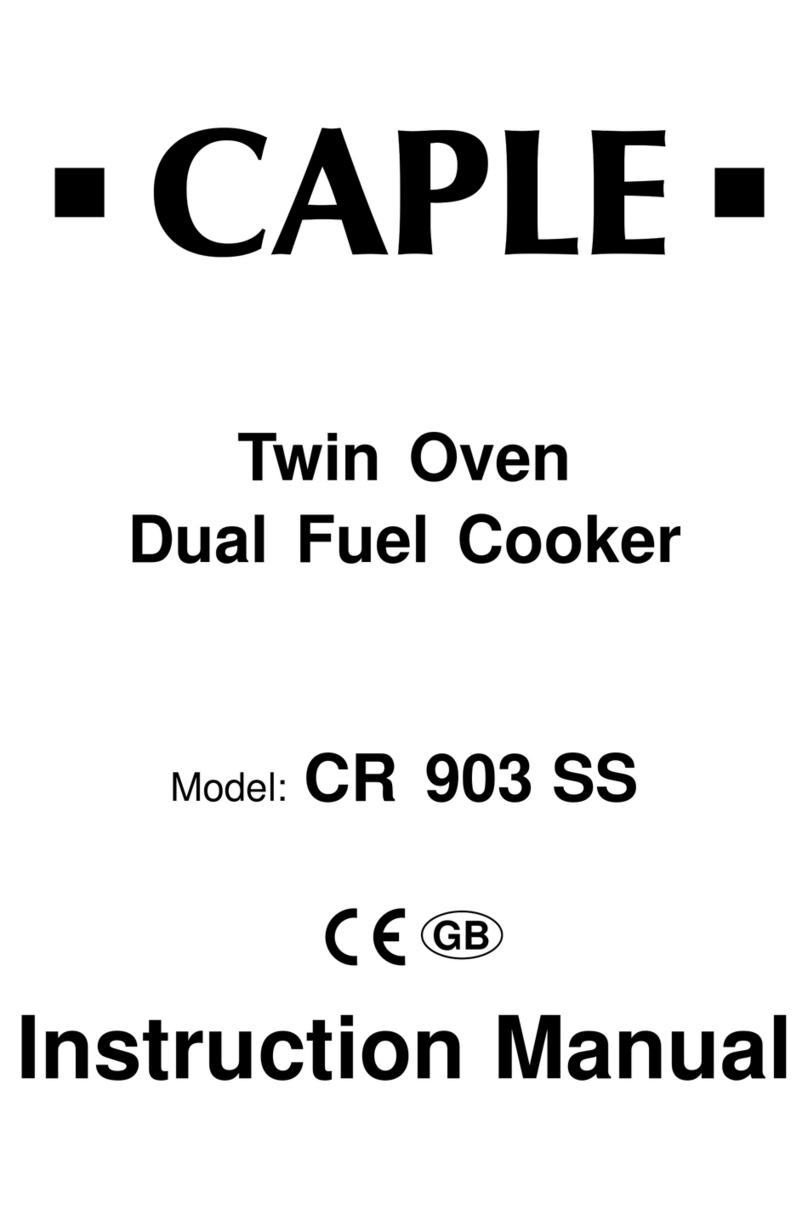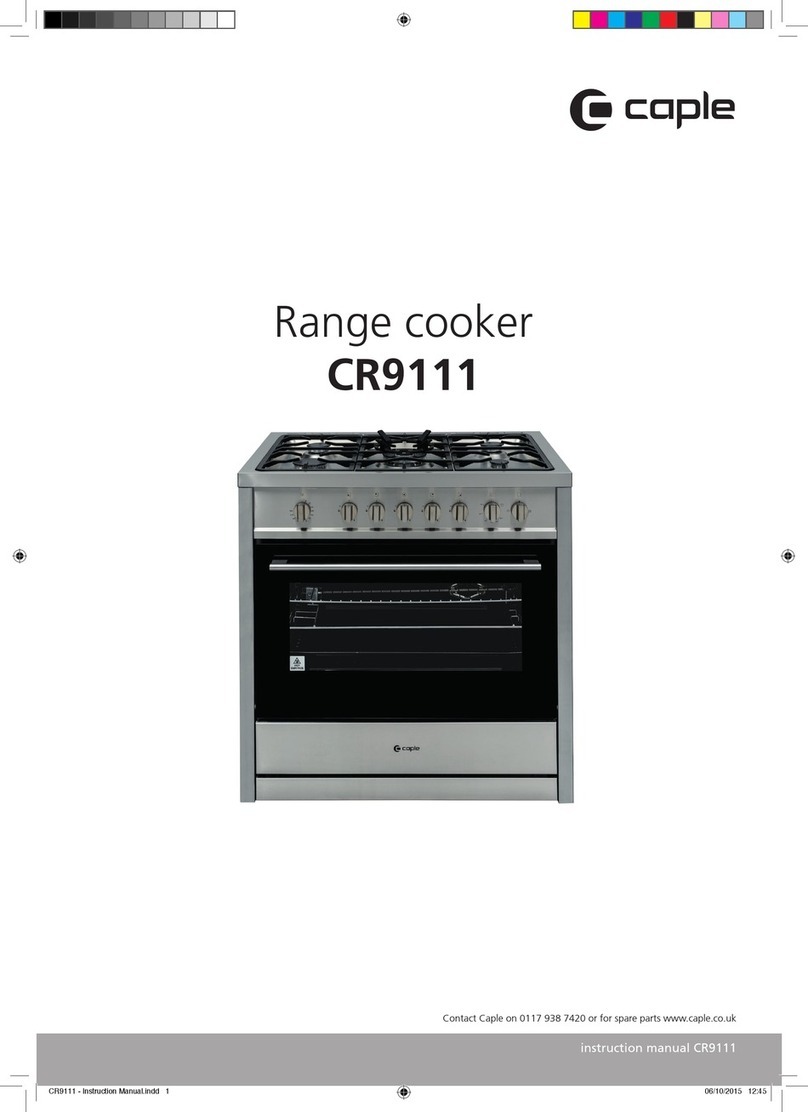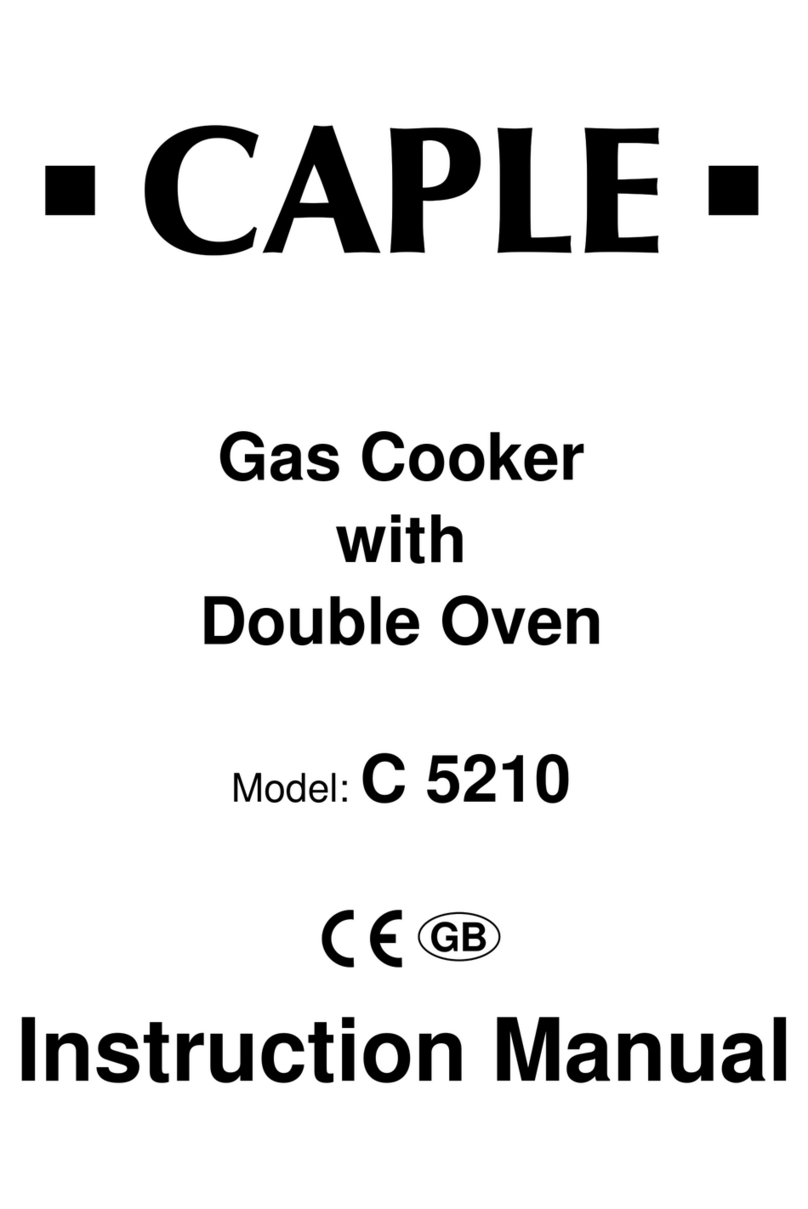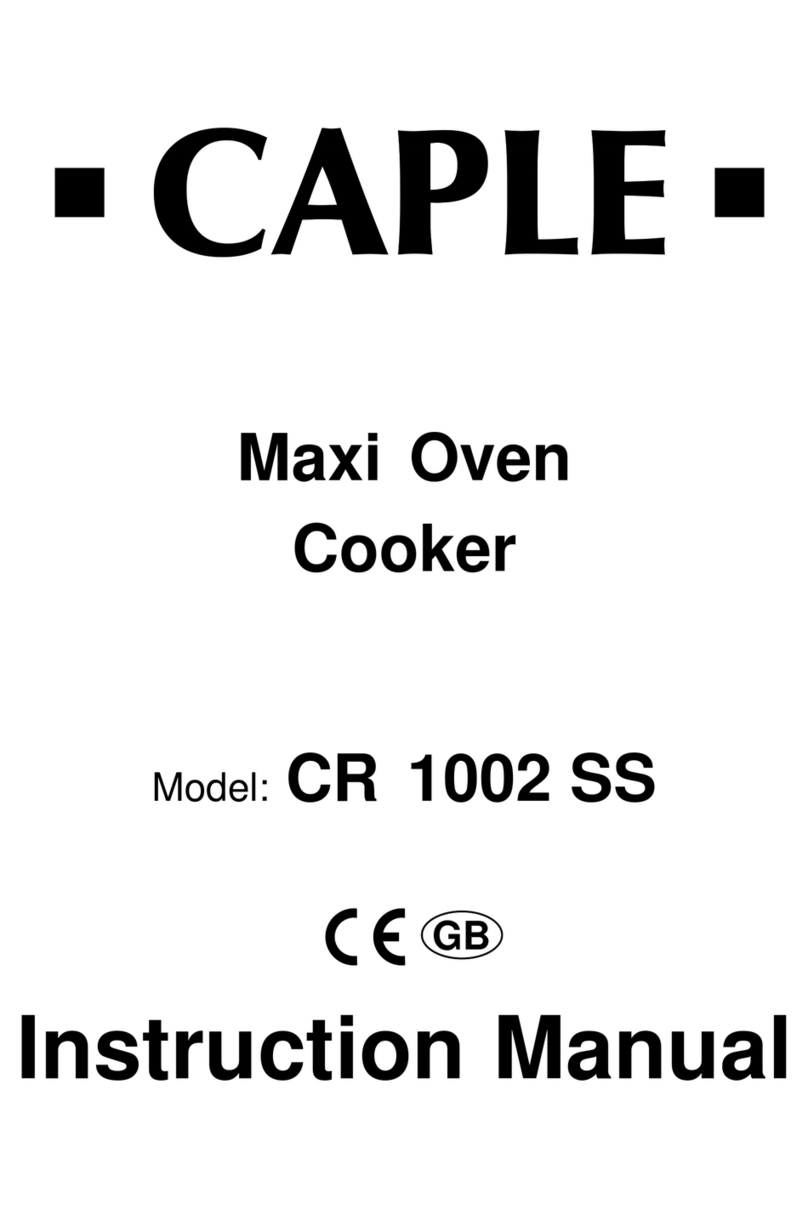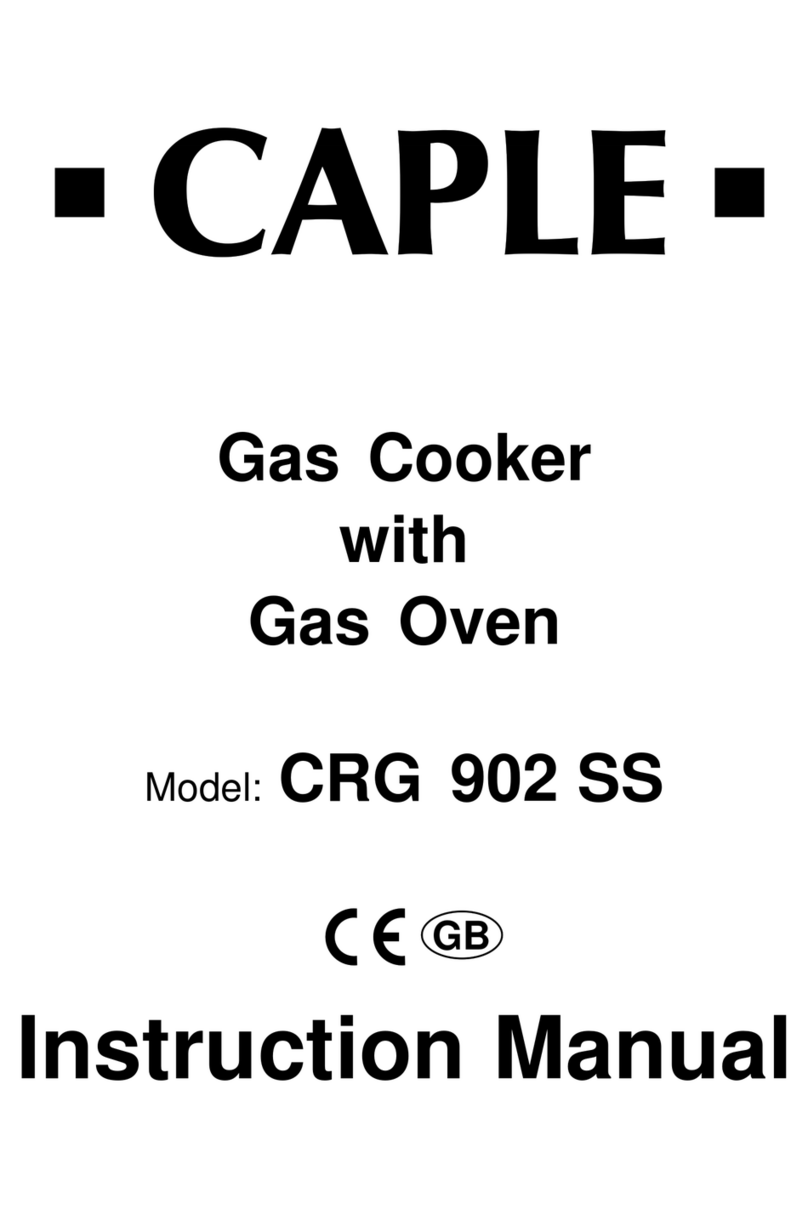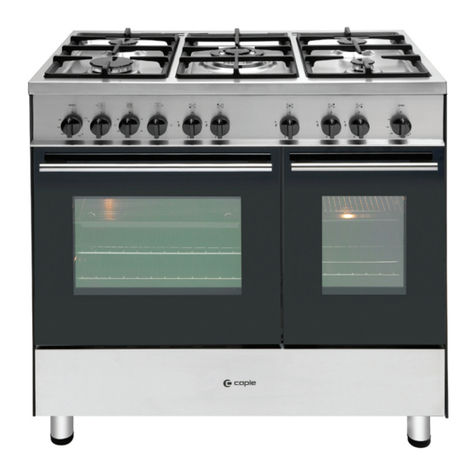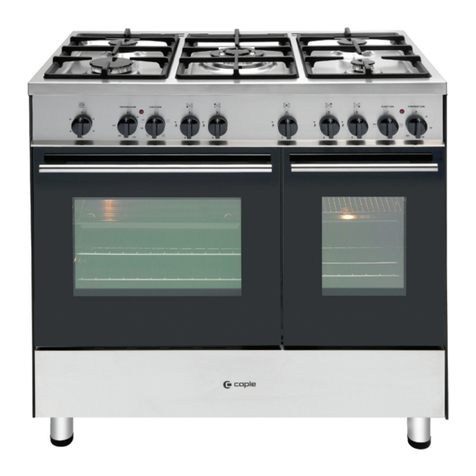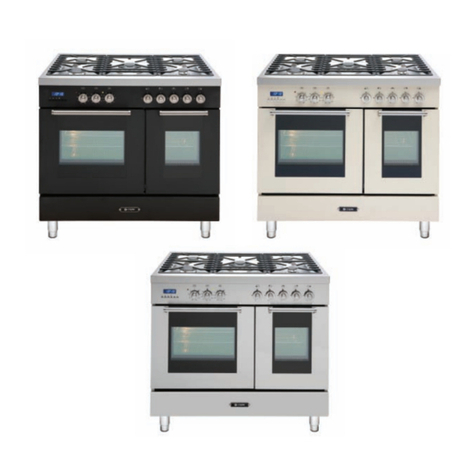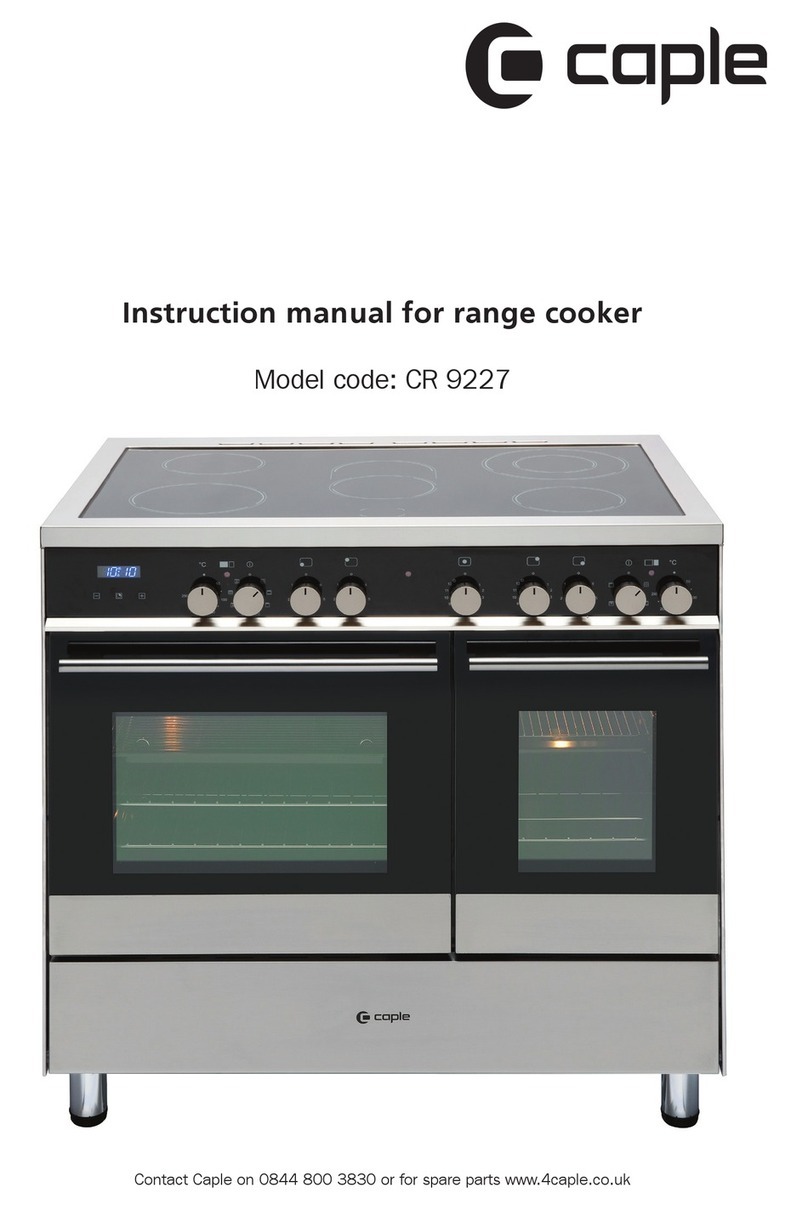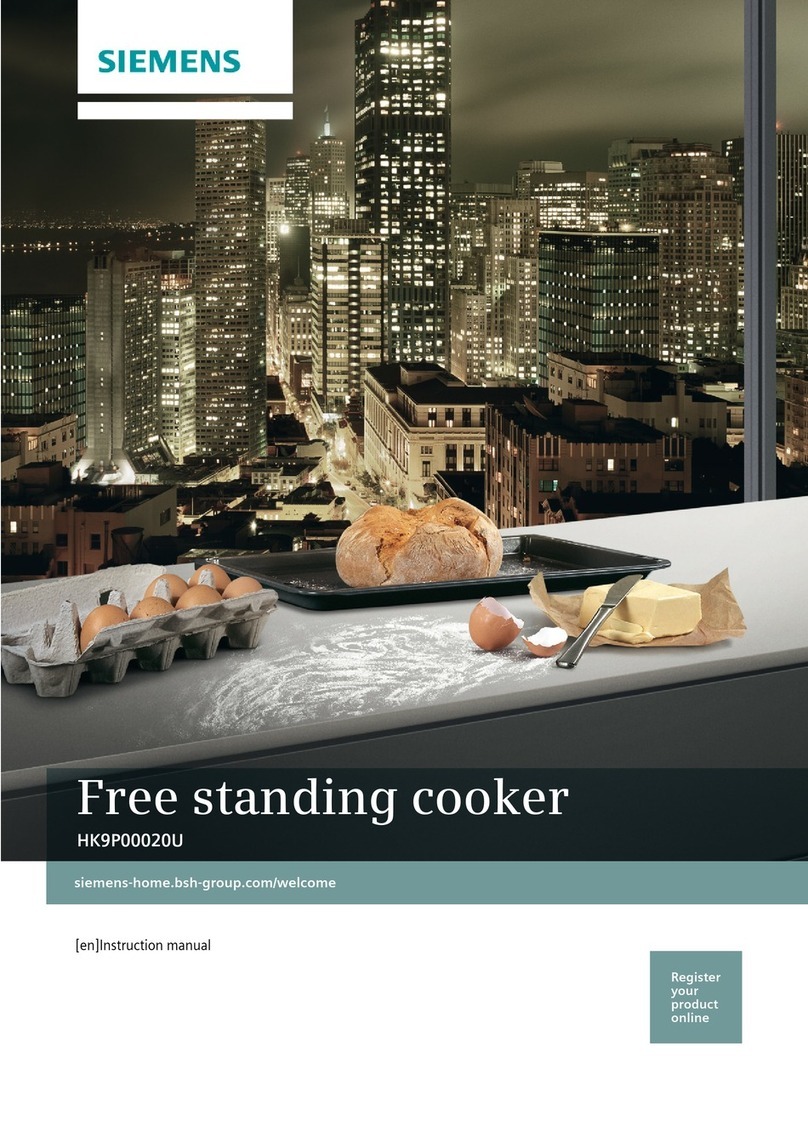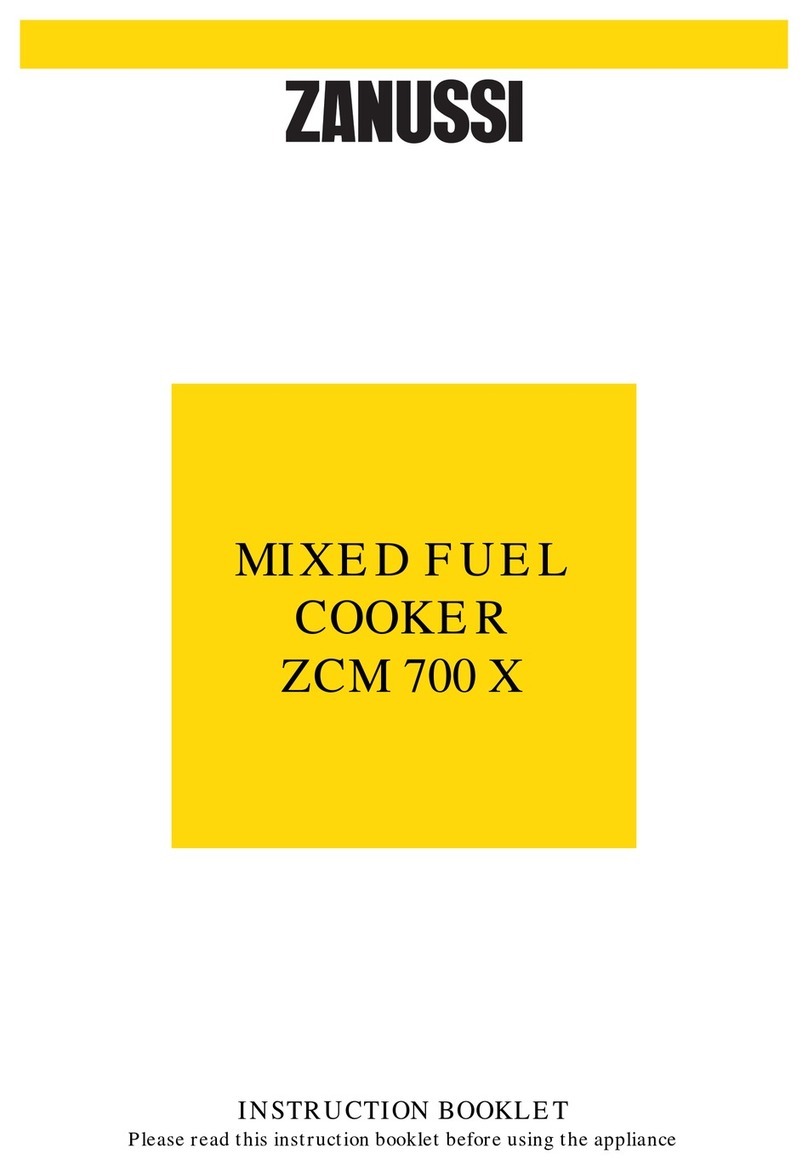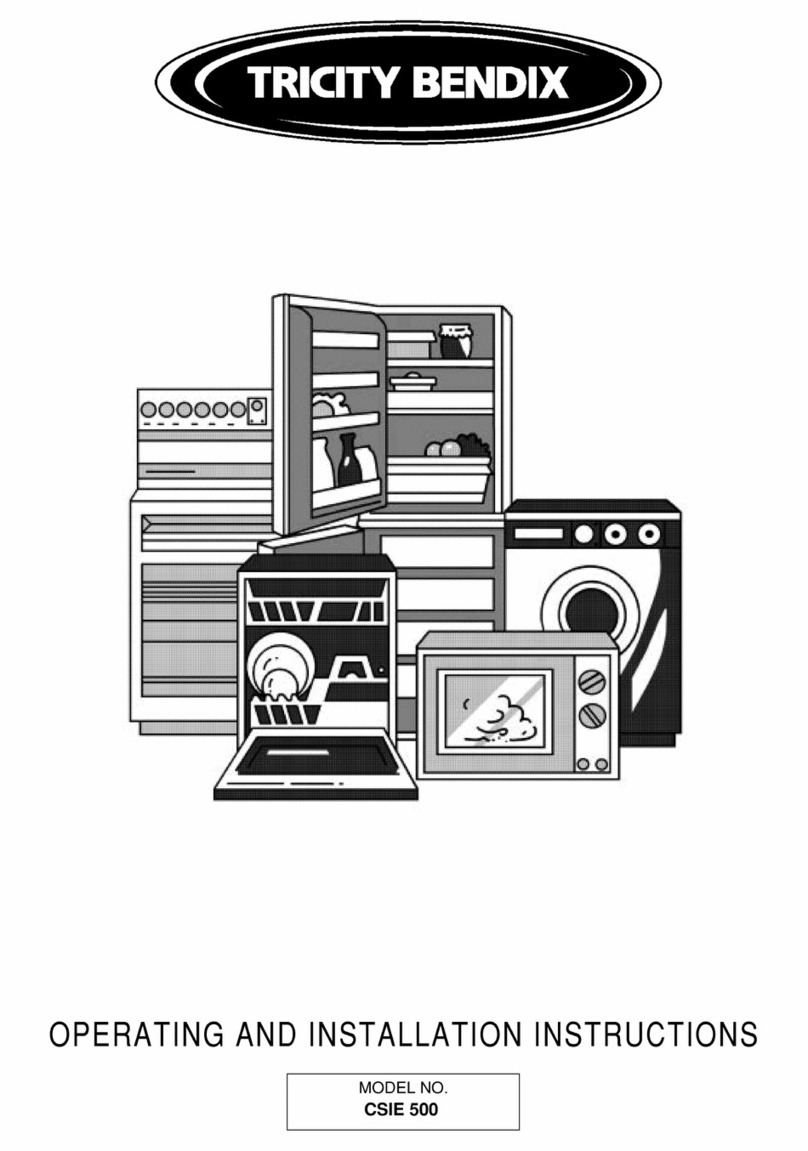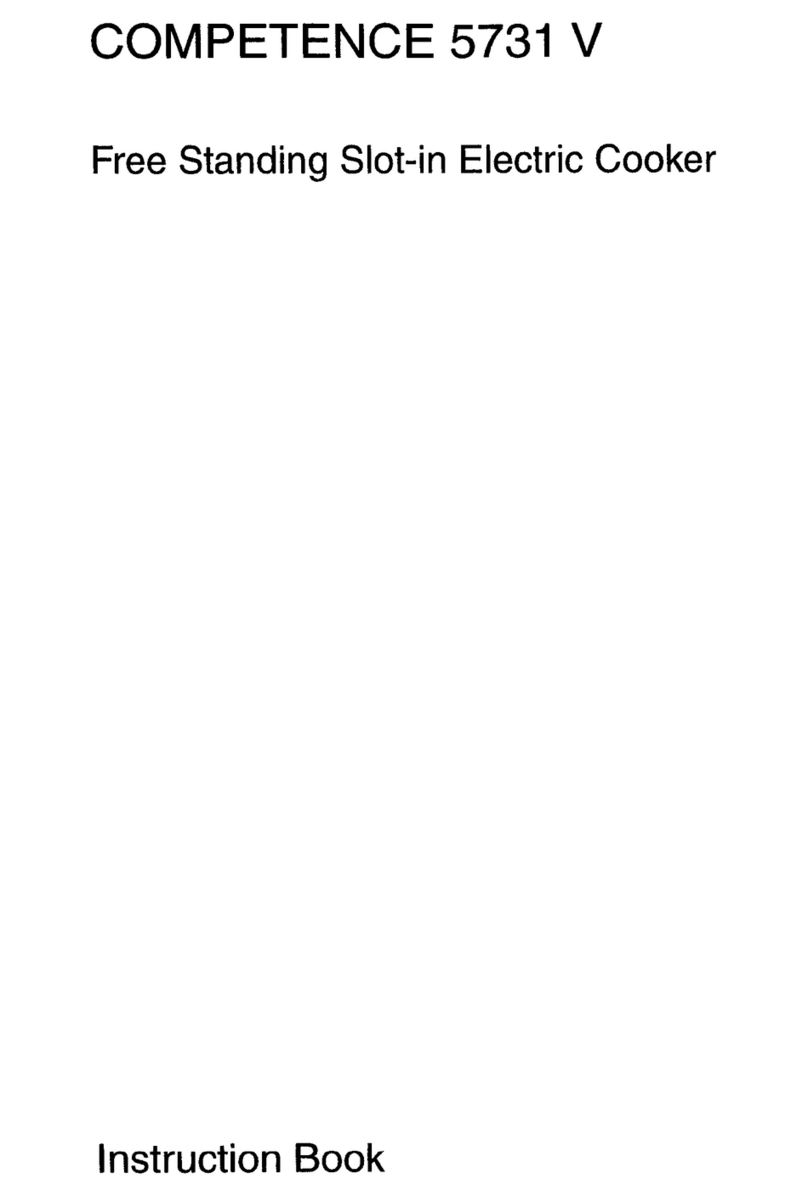IMPORTANT NOTE
This appliance is supplied for use on NATURAL GAS or LPG (check the gas regulation label
attached on the appliance).
4Appliances supplied for use on NATURAL GAS: they are adjusted for this gas only and
cannot be used on any other gas (LPG) without modification. The appliances are
manufactured for conversion to LPG.
4Appliances supplied for use on LPG: they are adjusted for this gas only and cannot be used
on any other gas (NATURAL GAS) without modification. The appliances are manufactured
for conversion to NATURAL GAS.
If the NATURAL GAS/LPG conversion kit is not supplied with the appliance this kit can be
purchased by contacting the After-Sales Service.
INSTALLATION & SERVICE REGULATIONS (UNITED KINGDOM)
It is a legal requirement that all gas appliances are Installed & Serviced by a competent
person in accordance with the current editions of the following Standards & Regulations or
those regulations appropriate to the geographical region in which they are to be installed:
=Gas Safety (Installation & Use) Regulations
=Building Regulations
=British Standards
=Regulations for Electrical Installation
Installation and service of any gas product must be made by a suitably qualified person
competent on the type of product being installed or serviced and holding a valid certificate of
competence for the work being carried out. Currently the proof of competence is the
Accredited Certification Scheme (ACS) or S/NVQ that has been aligned to the ACS.
It is also a requirement that all businesses or self employed installers are members of a class
of person approved by the Health and Safety Executive.
Failure to install the appliance correctly could invalidate any manufacturers warranty and
lead to prosecution under the above quoted regulation.
GAS CONNECTION
INSTALLATION TO NATURAL GAS
Installation to Natural Gas must conform to the Code of Practice, etc.
The supply pressure for Natural Gas is 20 mbar.
INSTALLATION TO LP GAS
When operating on Butane gas a supply pressure of 28-30 mbar is required.
When using Propane gas a supply pressure of 37 mbar is required.
The installation must conform to the relevant British Standards.
The installation of the gas appliance to Natural Gas or LP Gas must be carried out by
a suitably qualified and registered person. Installers shall take due account of the pro-
visions of the relevant British Standards Code of Practice, the Gas Safety Regulations
and the Building Standards (Scotland)(Consolidation) Regulations issued by the Scottish
Development Department.
The installation must conform to the relevant British Standards.
